Eastern parts and Southern parts of Texas are at high risk of termite damage. Texas is one of the states that see heavy termite swarms during the day in the spring, summer, and fall.
Termites can cause significant damage to homes and following best practices in the home, standards are recommended to keep them away.
Table of Contents
Are There Termites in Texas
Over 30 counties in Texas have been confirmed with termites. Dampwood, drywood, and subterranean termites have been found in Texas.
Many areas of the state are considered high risk when it comes to dangerous termites. Houston, Pasadena, and Irving are just a few areas where termites are seen in high numbers.
Types of Termites in Texas
All types of termites are found across Texas. This includes termites that live in the ground, termites that prefer drywood, and termites that prefer dampwood.
Subterranean Termites
1. Eastern Subterranean Termite
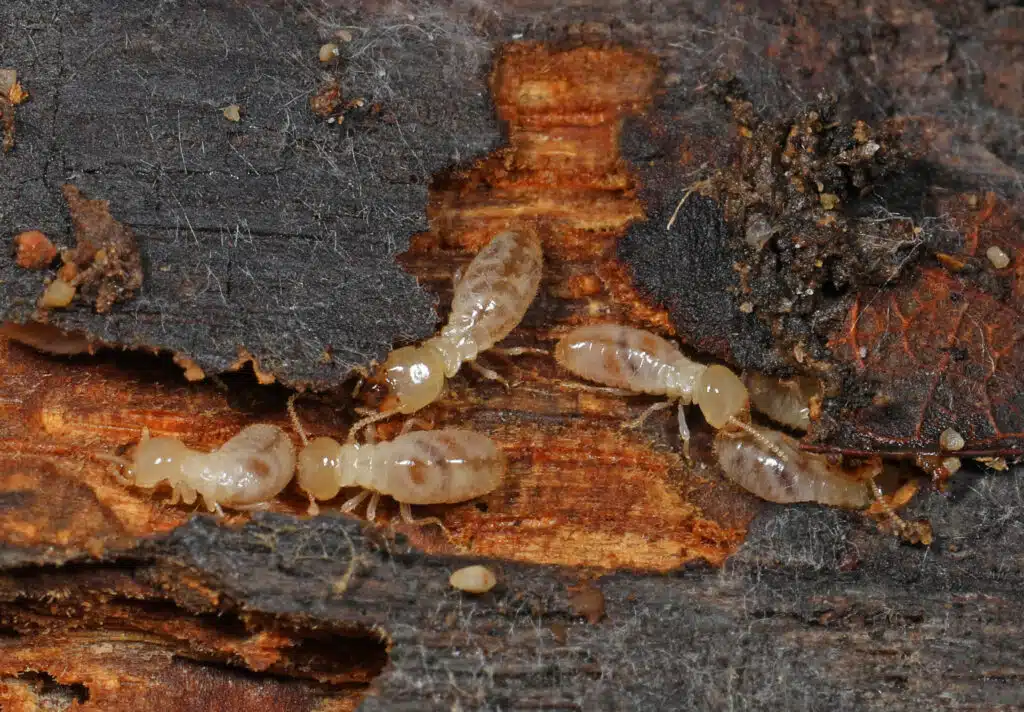
Subterranean termites such as the Eastern Subterranean Termite (Reticulitermes flavipes) are the most prevalent in Northern parts of Texas.
This is the most economically significant termite species in the US due to the damage it causes to homes.
The Eastern Subterranean Termite lives in colonies. These numbers are anywhere between a few thousand termites up to a few million termites.
Nesting in the ground, this species creates mud bridges toward homes. Some of the most common parts of a home affected by the Eastern Subterranean Termite include structural timber, flooring, and trim work.
2. Formosan Subterranean Termite
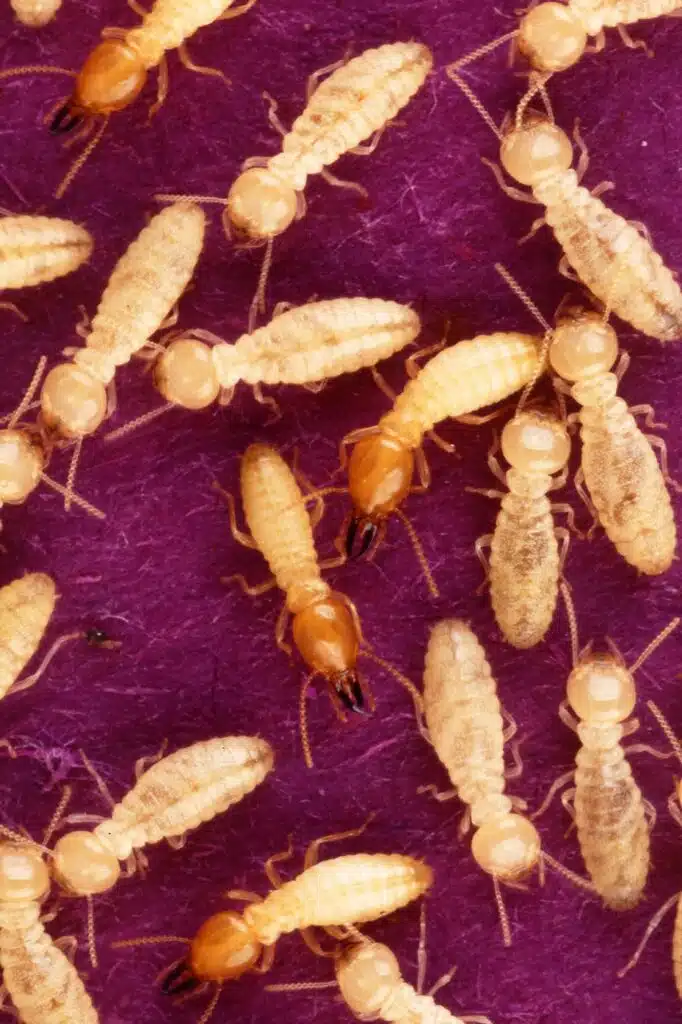
The Formosan Subterranean Termite (Coptotermes formosanus) was discovered in Texas in 1956. It has spread to almost all major metropolitan areas of Texas since then.
These termites of Asian origin are considered very aggressive. They tend to penetrate multiple types of materials. Except for cement, these termites have no problem attacking wood, plastic, and even metal around the house.
As subterranean termites, the Formosan Subterranean Termite family is known to search for food underground. These termites build mud bridges toward homes where they infest decaying wood.
3. Western Subterranean Termite
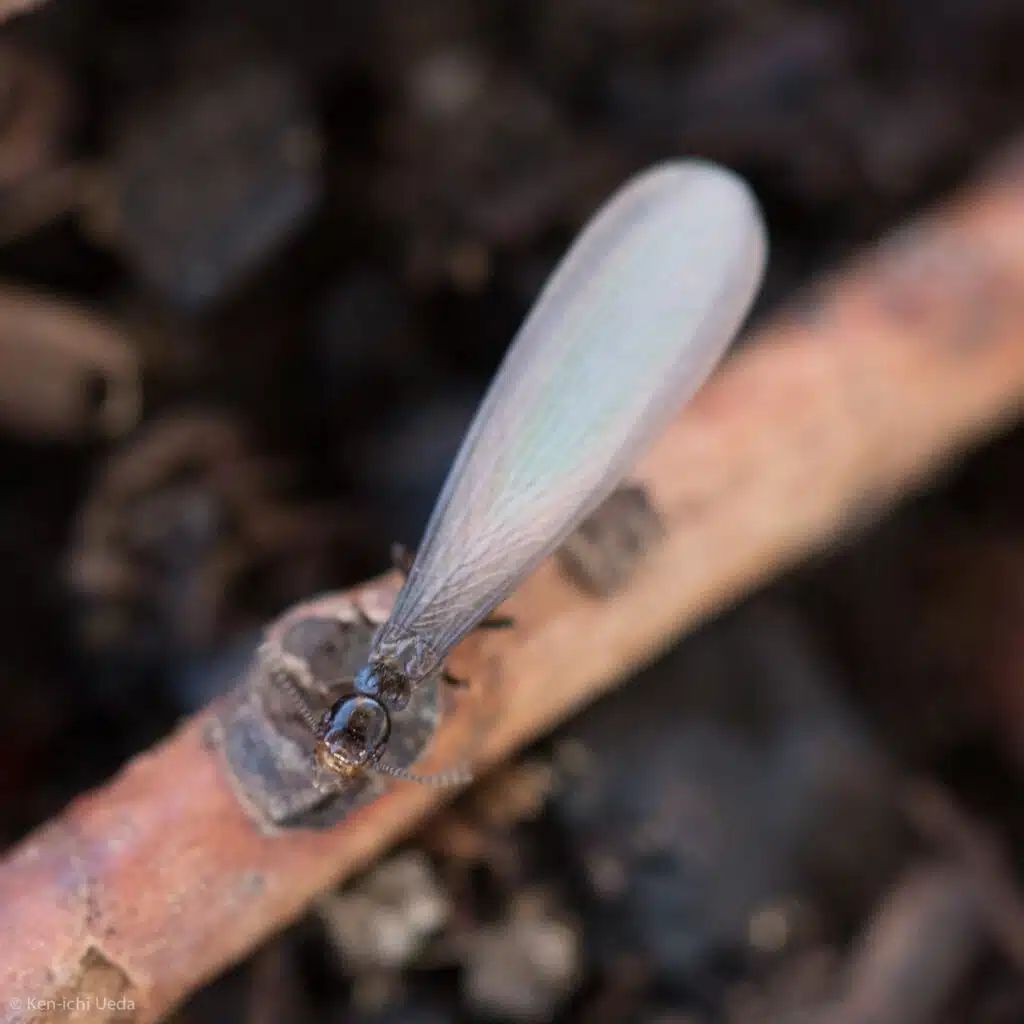
These dark termites (Reticulitermes hesperus) grow up to 3/8 inches. It lives in the soil and it moves up towards homes.
Mud tubes are how these termites make their way toward homes.
The Western Subterranean Termite causes significant damage to homes. It attacks all pieces of wood affected by moisture around the house.
Drywood Termites
4. Western Drywood Termite
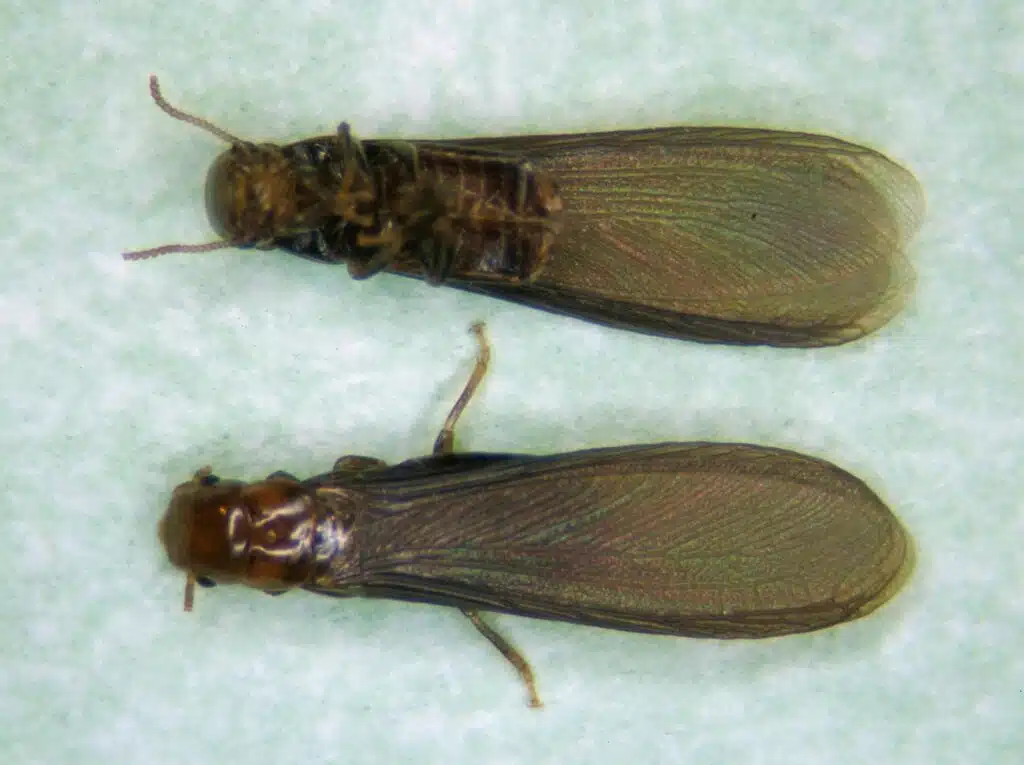
The Western Drywood Termite is one of the most common dyrwood termites in Western counties. It swarms in hot weather with rain due to the high air humidity.
Individuals of this species are known to grow up to 0.5 inches. There Western Drywood Termite is a social species with castes of reproductive termites, soldier termites, and worker termites.
Up to 3.000 individuals form a colony. Most Western Dyrwood Termite colonies are in homes where the wood is driest.
Dampwood Termites
5. Desert Dampwood Termite
Desert Dampwood Termites are a common sight in homes that have a water leak problem. They nest in wood affected by water. One of the best ways to determine a Desert Dampwood Termite infestation is by assessing the tunnels dug by this species as they are very smooth on the inside.
Known for a brown color for kings and queens and a yellow color for workers, these termites start swarming in May. They remain active and can reach homes up to September.
This is one of the most damaging termite species in Texas. While it affects homes with a water leak problem, it also attacks trees. It does this unknowingly for people as it affects trees below the ground level.
Are Termites Dangerous?
Termites are dangerous to homes and even trees. Some of the most dangerous termites in the US are found in Texas. They are known for creating the following types of damages.
- Structural damage
Termites can affect the wooden structure of a home. These damages can be mild or severe. Some mild damages can be met by action that stops termites from continuing their impact on the wood.
Structural damages to a home can manifest in different ways.
- Cracked walls
- Uneven walls and floors
- Cracks in wooden stairs
- Gaps between walls, stairs, and beams
- Damage to furniture
Furniture can be as affected as the house itself whenever a termite colony invades. Many Texas termites invade colonies of at least 3.000 individuals which means they can inflict considerable damage to the entire house and the furniture inside easily.
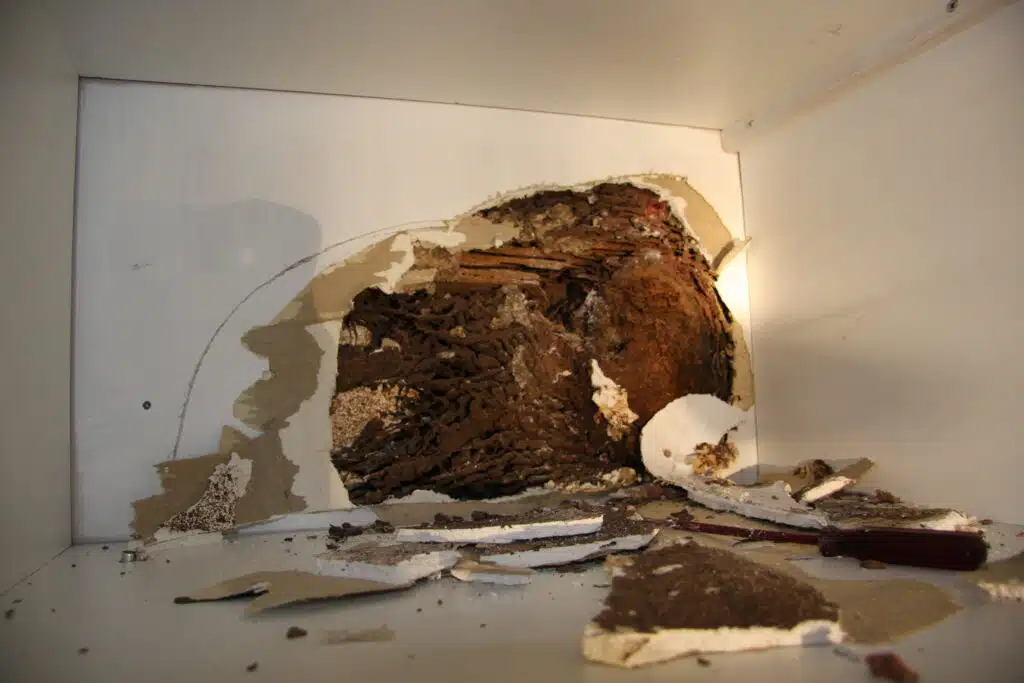
- Damage to doors and windows
Termites might not start with structural damages to a home. They might only inflict a few issues with doors and windows before homeowners spot them.
Damages to doors and windows come with issues such as doors and windows not closing properly. The frame of the door and the frame of the window are sometimes known for a wide range of termite attacks, especially if there’s artificial light next to them as light attracts termites.
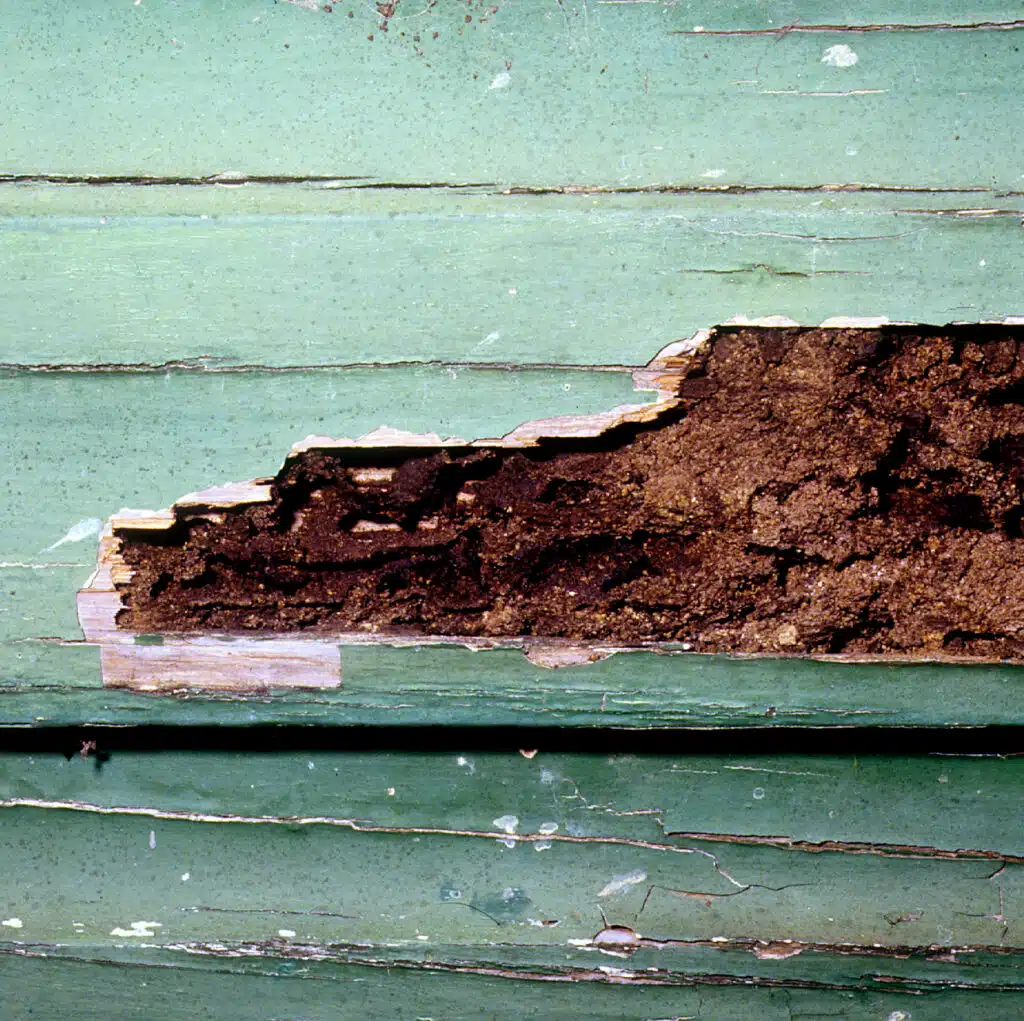
- Patio damages
Termites regularly affect Texas patios. Many patios are built directly on the ground and this facilitates subterranean termite attacks.
- Flooring damages
Floors can also get damaged by termites. Uneven floors or squeaky floors can be an indication of termite damage. Homes that aren’t made with a proper foundation barrier can easily see termite impact on floors first.
- Cracks in ceiling beams
Termites in Texas cause cracks in callings all the time. Ceilings are expensive to fix and they sometimes require vacating the home.
- Foundation damage
One of the most expensive problems to fix caused by termites is affected wood in the homes’ foundation. Many homeowners in Texas aren’t aware of a foundation termite problem until it’s too late or until the problem is very costly to fix.
- Damage to surrounding trees
Termites often affect nearby trees. Branches can fall off completely. Some tree branches affected by termites can fall on the house or the garage, further demanding costly repairs.
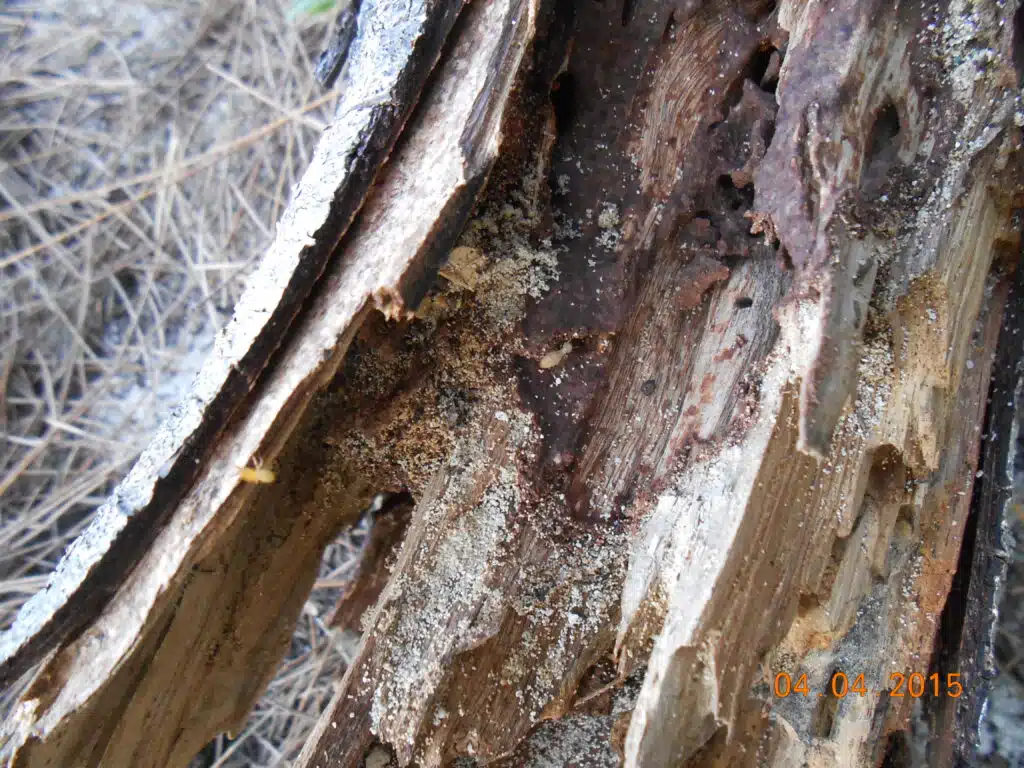
Why Do I Have a Termite Problem?
There are many reasons why termites affect homes in Texas. The warm climate in Texas means that termites have a long swarming season. The season starts sooner and it ends later (mostly in the fall) than in other parts of the country.
Having termites is a problem that’s caused by one or several following reasons.
- Leaky pipes
Leaky pipes create flooding or high humidity. This facilitates dampwood and decaying wood which acts as a magnet for termites.
This type of wood provides the moisture needed for termites to survive as well as a softer material to dig tunnels through.
All leaky pipes in Texas homes should be fixed immediately, especially in one of the areas known to have termites.
- Clogged gutters
Clogged gutters create all types of leaks around the house. The problem with clogged gutters is they create small leaks which aren’t always visible.
Water is not directed properly when the gutters are clogged and it may end up along the walls and on the home’s foundation creating a habitat that attracts termites.
- High indoor humidity
High indoor humidity is another common cause of termites in Texas homes. High humidity may or may not be tied to water leaks.
Some homes have poor ventilation which favors high humidity. Other homes have a combination of poor ventilation and leaks which leads to high humidity.
- Wood structures touching the ground
Building a home or a garage directly on the ground creates a termite problem. Subterranean termites can access these homes faster. The biggest issue is moisture which is drawn by the wood directly from the ground.
When Do Termites Swarm in Texas?
Termites have a long season in Texas. Some species appear as early as February and they swarm until September.
Spring – this is the season most Texas termites arise. Species such as Southeastern drywood termites and Formosan termites are known to begin swarming in the spring.
Summer – most species of subterranean Texas termites swarm in the warm summer months
Fall – many species of termites continue to swarm in the fall, particularly after rainfall
Signs of Termite Infestation
A home has similar signs of termite infestation in Texas as in other states known for high termite populations such as Florida.
- Stuck windows and doors
One of the signs that indicate a termite problem inside a home is a door that doesn’t shut properly. The same can be said about windows.
Door frames and window frames that don’t shut properly could indicate a deeper termite problem.
- Discarded wings
Some termites shed their wings after mating in the air. Many people discard these wings by thinking they come from flying ants.
A high number of wings from termites around the house is a clear indication of a possible termite infestation in the home or near the home.

- Mud tubes
There are 3 types of mud tubes Texas homeowners should look out for.
- Working tubes
- Exploratory tubes
- Drop tubes
These tubes have different purposes from exploration (mainly leading to food) or directly to wood.
- Droppings
Termite droppings are visible and they look like small pellets. These are an indication of a termite colony nearby.
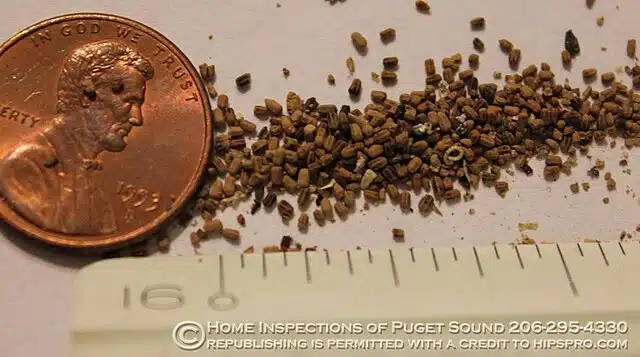
- Damaged wood
The most obvious sign of a termite problem is damaged wood. Many pieces of wood are only observed as damaged when the damage is serious.
Parts of trimmings that are falling apart, parts of structural wood that are falling apart, or even small damages such as wood discoloration are all signs of a termite problem.
Clicking noises from the walls
Termites can sometimes be heard inside the home. Their tunnel-making abilities are tied to noises that cannot be overlooked. It’s best to call a professional at this time.
- Hollow-sounding wood
Some termite damages aren’t visible at all. Digging tunnels deeper inside the wood or even in walls, termites aren’t always creating damage that is visible from the outside.
Wood tapping is a technique where pieces of wood are tapped barehanded or with an object to test its sound. A hollow-sounding wood is an indication of a possible termite problem.
How to Get Rid of Termites in Texas
One of the most successful methods of dealing with Texas termites is to prevent them altogether. Other measures in case of an infestation are also required.
- Fixing leaky pipes
Leaky pipes create a problem with dampwood. All pipes should be properly maintained and regularly checked for leaks as even a small leak can create a considerable termite problem over time.
- Using dehumidifiers
Dehumidifiers are recommended in homes that have high humidity. They can eliminate gallons of water per month and they can control indoor humidity levels. In turn, this controls the dampness and the puddling water issues that may attract termites.
- Fixing leaky roofs
Leaky roofs are part of the same home water problem. All roofs should be regularly checked, especially after a storm to prevent rainwater from making its way inside the house.
Texas Termite Prevention
Professionals that deal with termites in Texas recommend installing termite bait stations around the house. These should be installed even if the home is in a good condition without humidity problems.
Most termite baits are made using a combination of insecticide and either wood or cellulose. Termites eat the bait and spread it out through the colony eventually dying.
Termite baits are installed in the ground so they don’t require modifying a home to keep termites away.
A few termite baits are recommended around homes in Texas. These baits can also prevent termite molt which eventually kills off a colony.
Summary
There are many types of termites in Texas. Parts of the state are considered highly likely for termite invasion compared to some of the most termite-affected areas of the country.
Texas termites live in the ground, in dampwood, or drywood. They can infest a home in their thousands. Looking for indications of termite invasion is recommended as early detection is key.
Most professionals recommend using termite baits in areas known for high numbers of termites. Subterranean termites are found in almost all parts of Texas. Metropolitan areas around Beaumont, Houston, and Port Arthur are particularly prone to termite problems.
Further Reading: